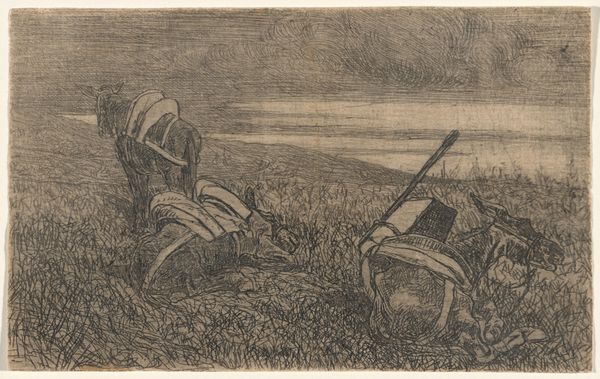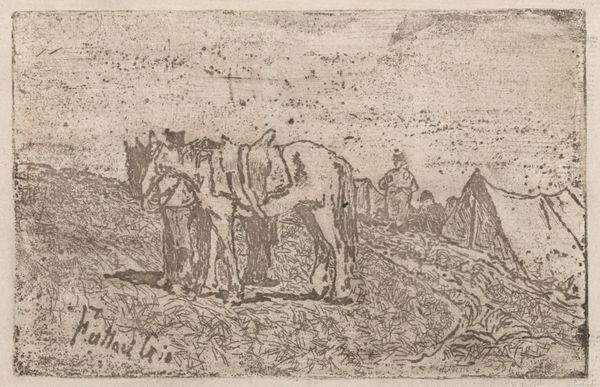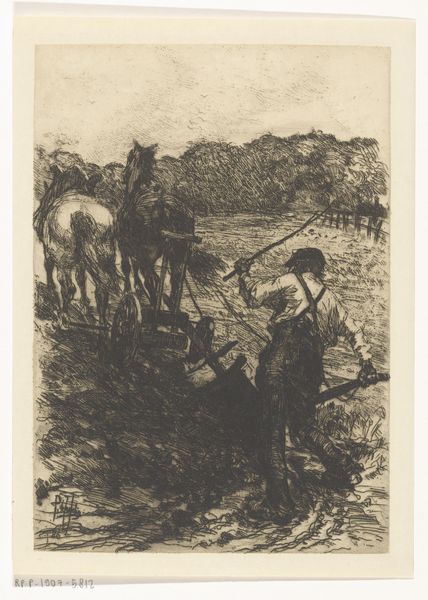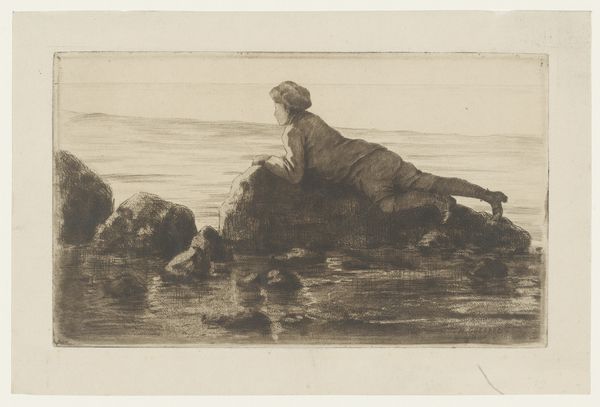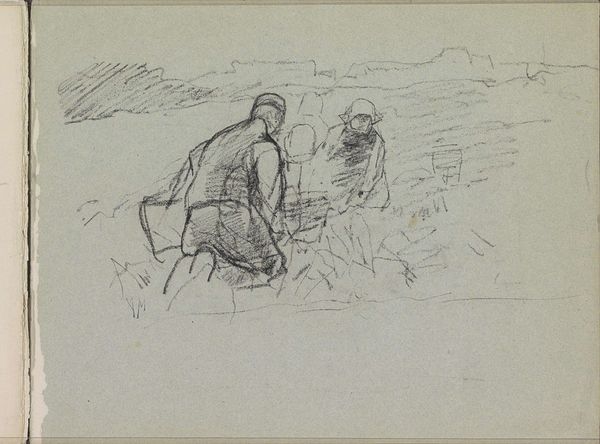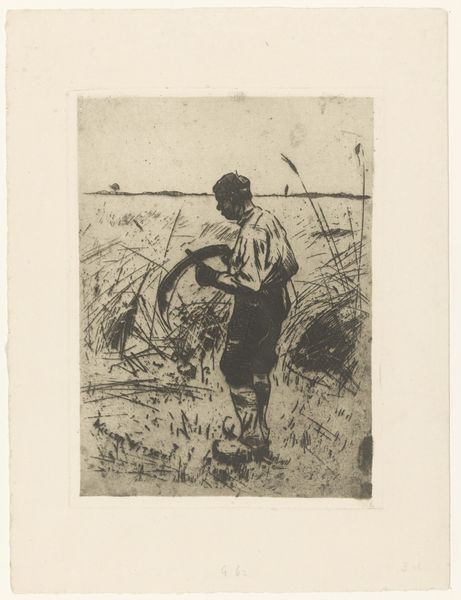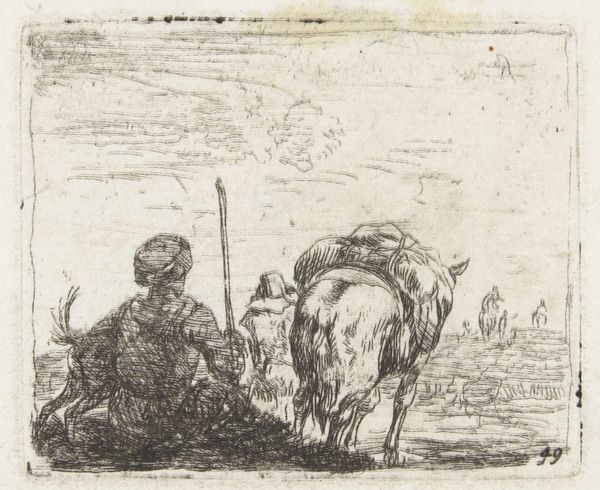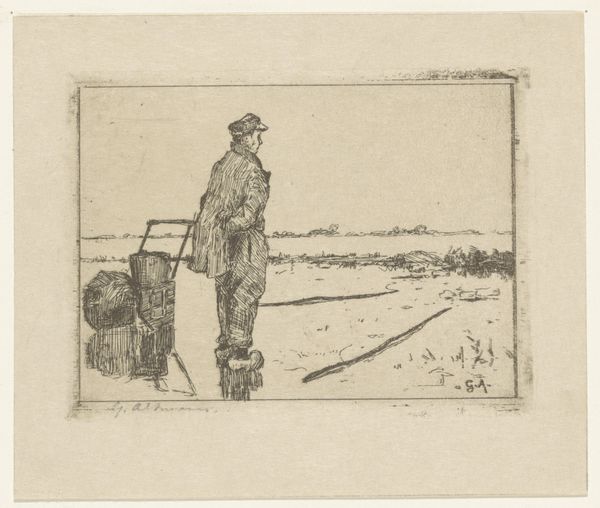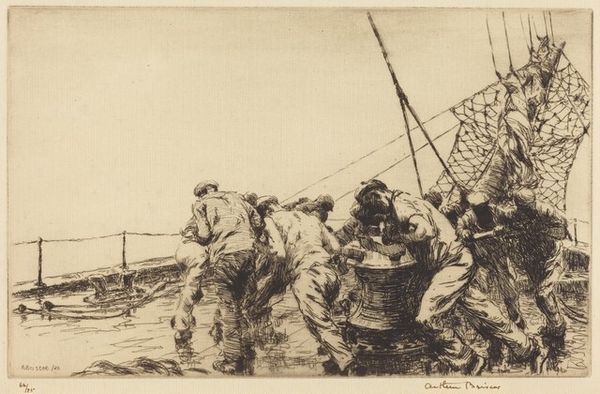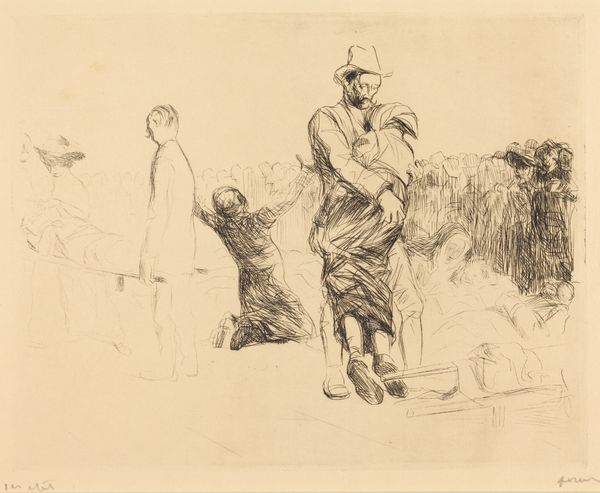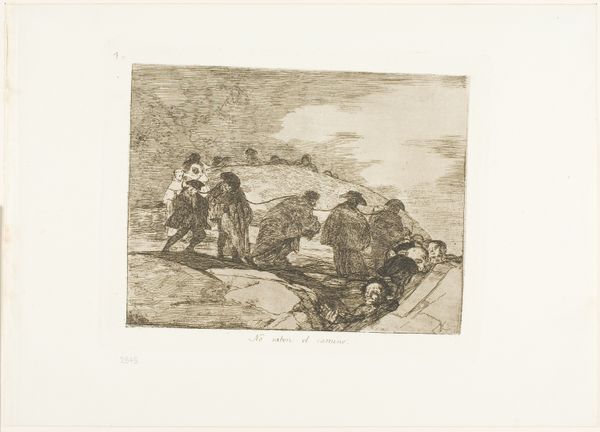
drawing, charcoal
#
drawing
#
dutch-golden-age
#
pencil sketch
#
landscape
#
figuration
#
genre-painting
#
charcoal
#
realism
Dimensions: height 200 mm, width 230 mm
Copyright: Rijks Museum: Open Domain
Editor: So, this is Willem Witsen's "Woodcutter," a drawing in charcoal and pencil estimated between 1870 and 1923. It's striking how simple yet powerful the image is, this lone figure laboring in the field. How do you interpret this work in its historical context? Curator: It's a compelling image, isn’t it? I see it as a social commentary. Consider the period—late 19th, early 20th century—a time of immense social change, industrialization, and growing class consciousness. Witsen, part of the Amsterdam Impressionism movement, often depicted working-class subjects. Editor: So, the focus on a woodcutter isn’t just about capturing a scene, but also saying something about labor? Curator: Precisely! The figure’s bowed posture, the seemingly endless field...it evokes a sense of hardship, the relentless nature of manual labor. Witsen is inviting us to consider the human cost of progress, isn’t he? Think about whose stories are told and whose labor supports the very concept of 'art' as something distinct from labor. Do you see anything in his technique that reinforces this reading? Editor: I notice the loose, almost unfinished quality. Maybe it mirrors the instability of the working class at that time? Curator: Yes, the sketch-like quality contributes to that sense of immediacy, of rawness. It isn't idealized; it's real. And, how does that realism reflect on art and the position of the figure of the woodcutter? Editor: I hadn't considered how many layers there were to something that seemed so simple. Thanks, it offers a much richer experience now. Curator: Indeed, seeing art as more than just aesthetics, understanding the conversations they provoke—that's where the real power lies.
Comments
No comments
Be the first to comment and join the conversation on the ultimate creative platform.
